Senegal Biodiversity: Animal and Plant Species and What Is Under Threat
Did you know that Senegal, the country located on the westernmost point of Africa, is home to a remarkable array of biodiversity? From the lush forests to the diverse marine ecosystems, Senegal boasts a rich variety of animal and plant species that contribute to the country’s vibrant natural heritage. However, this biodiversity is now facing significant threats, requiring urgent attention and wildlife conservation efforts.
Key Takeaways
- Senegal is home to a diverse range of animal and plant species, contributing to its unique and rich biodiversity.
- The Ministry of the Environment and Sustainable Development in Senegal is responsible for biodiversity conservation.
- Senegal’s National Biodiversity Strategy and Action Plan (NBSAP) aims to improve knowledge, conservation, and sustainable use of biodiversity.
- Protected areas have been established in Senegal to preserve wildlife habitats and support endangered species.
- Challenges include integrating biodiversity into national planning, securing financial resources, and protecting endangered species.
Key Policies and Governance Approach
Senegal recognizes the importance of environmental protection and biodiversity research in the country. The Ministry of the Environment and Sustainable Development takes the lead in coordinating the efforts to conserve biodiversity. To ensure effective collaboration, the National Committee on biodiversity facilitates coordination between different ministries and sectors involved in biodiversity management.
Senegal has developed a comprehensive National Biodiversity Strategy and Action Plan (NBSAP) to guide its conservation efforts. This strategic plan provides a framework for biodiversity research and outlines key policies and strategies for various aspects of conservation, including wetlands, marine protected areas, and plant genetic resources.
The National Biodiversity Strategy and Action Plan (NBSAP) plays a crucial role in guiding Senegal’s environmental policies and governance approach, emphasizing the need for sustainable management of the country’s rich biodiversity.
Despite progress, evaluations of the NBSAP have highlighted certain limitations in integrating biodiversity into national planning. To address this, there is a need for improved legal frameworks and better access to financing for biodiversity conservation in Senegal’s environmental protection efforts.
Senegal recognizes the importance of biodiversity research in guiding conservation actions. By investing in research and monitoring, the country aims to enhance its understanding of the unique ecosystems and species found within its borders.
Biodiversity Policies and Strategies in Senegal
In alignment with its commitment to environmental protection, Senegal has established policies and strategies specifically tailored to protect its diverse ecosystems and species:
- The Wetlands Policy: Senegal has implemented a comprehensive policy to safeguard the integrity and biodiversity of its wetlands. This policy includes the development of management plans and the promotion of sustainable use and conservation practices.
- Marine Protected Areas Strategy: Senegal has also developed a strategy for the creation and management of marine protected areas. These designated areas play a vital role in preserving marine biodiversity and supporting sustainable fishing practices. (garlandpediatricdental.com)
- Plant Genetic Resources: Recognizing the importance of plant genetic resources for sustainable agriculture and food security, Senegal has established policies to conserve, utilize, and share its diverse plant genetic resources.
| Policy/Strategy | Description |
|---|---|
| Wetlands Policy | Safeguards the integrity and biodiversity of wetlands through management plans and sustainable practices. |
| Marine Protected Areas Strategy | Focuses on the creation and management of marine protected areas for biodiversity conservation and sustainable fishing. |
| Plant Genetic Resources | Conserves, utilizes, and shares the diverse plant genetic resources essential for sustainable agriculture and food security. |
Implementing these policies and strategies is vital to ensure the long-term preservation of Senegal’s unique biodiversity.
Senegal’s commitment to environmental protection and biodiversity research drives its efforts to conserve its natural heritage. By adopting key policies and working towards improved governance, Senegal aims to enhance its environmental sustainability and contribute to global biodiversity conservation endeavors.
Successes and Remaining Challenges
Senegal has made significant progress in the preservation of its rich biodiversity through the establishment of a network of protected areas. This includes national parks, wildlife reserves, and marine protected areas. These areas serve as vital habitats for a diverse range of plant and animal species, ensuring their continued survival and promoting ecosystem health.
Efforts have also been made to address the conservation needs of endangered species in Senegal. Through targeted conservation programs and initiatives, populations of endangered animals have been stabilized and, in some cases, even increased. This is a testament to Senegal’s commitment to the protection and preservation of its unique wildlife.
However, there are still challenges to overcome in the field of biodiversity conservation in Senegal. One such challenge is the integration of biodiversity into national planning processes. While protected areas have been established, there is a need for a more comprehensive approach that incorporates biodiversity considerations into broader development strategies and policies.
Another challenge is the presence of inconsistencies in legislative texts related to biodiversity conservation. Harmonizing these texts and ensuring clear and effective legal frameworks will enhance the country’s ability to protect and manage its natural resources.
Mobilizing financial resources for biodiversity conservation is also crucial. Sustainable ecosystem preservation requires adequate funding to support conservation efforts, capacity-building initiatives, and the implementation of effective management strategies. Increased investment in biodiversity conservation will contribute to the long-term sustainability of Senegal’s ecosystems and the protection of its endangered species.
Furthermore, there is a need for improved knowledge and data on biodiversity, particularly in marine environments. A better understanding of marine ecosystems and the species that inhabit them will enable more targeted conservation efforts and effective management practices.
To summarize, while Senegal has achieved notable successes in the establishment of protected areas and the conservation of endangered species, there are still challenges that need to be addressed. Through continued efforts to integrate biodiversity into national planning, harmonize legislative texts, mobilize financial resources, and enhance knowledge and data on biodiversity, Senegal can further strengthen its commitment to ecosystem preservation and the protection of its unique natural heritage.
Illustrative Example
“Conserving Senegal’s biodiversity is not only essential for the well-being and survival of numerous species but also for the long-term sustainability of our ecosystems. By investing in biodiversity research, conservation education, and the preservation of endangered species, we are safeguarding our natural heritage for future generations to enjoy and benefit from.”
– Dr. Aissatou Sow Sidibe, Director of the Senegal National Parks Agency

Initiatives and Development Plans
Senegal is taking significant steps to protect its biodiversity hotspots and promote sustainable development. The country has implemented several initiatives and development plans to conserve its unique natural resources and ensure the well-being of both present and future generations.
Senegalese National Information System on Biodiversity (SENBIO-INFOS)
Senegal recognizes the importance of access to accurate biodiversity data for effective conservation and management. To facilitate this, the country has established the Senegalese National Information System on Biodiversity (SENBIO-INFOS). This system serves as a centralized database that enables researchers, policymakers, and conservationists to access information on various aspects of Senegal’s biodiversity. It plays a crucial role in supporting evidence-based decision-making and biodiversity monitoring efforts.
Financial Support from the French Development Agency (AFD)
Senegal has received valuable financial support from the French Development Agency (AFD) for key biodiversity conservation initiatives. This funding has been instrumental in promoting agro-ecology and the protection of marine biodiversity in Senegal. It has enabled the implementation of projects that focus on sustainable farming practices, ecosystem restoration, and the preservation of marine habitats.
The “Ecovillages” Program
Senegal has also launched the “Ecovillages” Program, which embodies the principles of sustainable development and biodiversity conservation. This innovative program aims to empower local communities in the management of natural resources, the conservation of biodiversity, and the development of renewable energies. Through the establishment of ecovillages, Senegal is promoting sustainable livelihoods and fostering environmental stewardship at the grassroots level.
The “Ecovillages” Program is supported by various development partners, including the United Nations Development Programme (UNDP), the Global Environment Facility (GEF), and the Japan International Cooperation Agency (JICA). These partnerships not only provide financial assistance but also contribute valuable expertise and technical support to ensure the success of the program.

Through these initiatives and development plans, Senegal is demonstrating its commitment to safeguarding its biodiversity and promoting sustainable development. By investing in information systems, financial resources, and community-driven programs, the country is creating a conducive environment for the conservation of its rich natural heritage.
Status and Trends of Biodiversity
Senegal boasts a remarkable array of plant and animal species, thriving in diverse natural habitats. The country’s ecosystems encompass lush forests, expansive agricultural areas, winding rivers and lakes, and captivating marine and coastal regions. However, this biodiversity faces significant threats due to human activities and deteriorating climatic conditions. Ecosystem degradation has become a pressing concern, with forest ecosystems experiencing substantial losses. Such habitat degradation poses a grave challenge to numerous animal species. While agricultural resources, livestock, and fisheries drive the economy, they too encounter obstacles like the impacts of climate change and overexploitation.
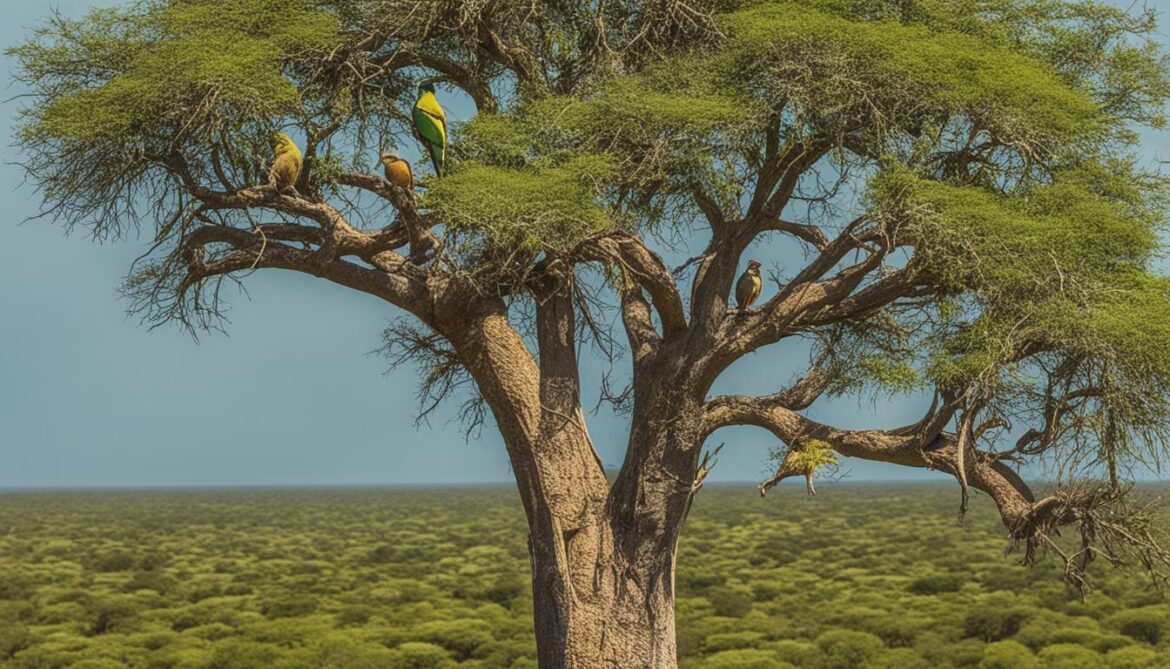
In the face of these challenges, protecting and preserving Senegal’s natural habitats and species diversity is of utmost importance. Addressing the root causes of ecosystem degradation is crucial for safeguarding the delicate balance of the country’s biodiversity. Sustainable practices and conservation efforts must be embraced to lessen the negative impact of human activities and mitigate the effects of a changing climate.
Forest Ecosystem Loss
One of the most significant concerns in Senegal is the loss of forest ecosystems. Deforestation, driven by logging, agriculture, and the expansion of urban areas, has resulted in the destruction of vital habitats for countless plant and animal species. The depletion of forested areas disrupts ecological balance and negatively affects species diversity. Conserving and restoring these forest ecosystems is essential to protect endangered species and maintain the overall health of Senegal’s biodiversity.
The Impact of Climate Change
The changing climate poses a substantial threat to Senegal’s natural habitats and species diversity. Rising temperatures, erratic rainfall patterns, and increased frequency of extreme weather events affect ecosystems and disrupt the delicate balance of biodiversity. Climate change also exacerbates habitat degradation and can lead to the extinction of vulnerable species. To combat this, efforts to mitigate and adapt to the effects of climate change are crucial for the long-term preservation of Senegal’s biodiversity.
Overexploitation of Agricultural Resources, Livestock, and Fisheries
Agricultural resources, livestock, and fisheries play a critical role in Senegal’s economy. However, their overexploitation poses challenges for biodiversity conservation. Unsustainable agricultural practices, overgrazing, and unregulated fishing can deplete natural resources, harm habitats, and threaten wildlife populations. Implementing sustainable agricultural practices, promoting responsible livestock management, and enforcing stricter fishing regulations are essential for ensuring the long-term viability of these industries while safeguarding the biodiversity they rely on.
Threats to Senegal’s Biodiversity
| Threat | Description |
|---|---|
| Deforestation | Loss of forested areas due to logging, agriculture, and urban expansion |
| Climate Change | Rising temperatures, erratic rainfall patterns, and extreme weather events |
| Overexploitation | Unsustainable practices in agriculture, livestock, and fisheries |
In conclusion, it is crucial to preserve and protect Senegal’s natural habitats to maintain the country’s rich species diversity. Addressing the threats posed by deforestation, climate change, and overexploitation is paramount for the long-term conservation of Senegal’s unique biodiversity.
Major Invasive Alien Species
Senegal has faced the introduction of invasive alien species with potentially devastating impacts on its ecosystems. These invasive species include plants, insects, and fish, posing a significant threat to the country’s biodiversity. Notable examples of invasive species in Senegal include Salvinia molesta, Eichhornia crassipes, and Leucaena leucocephala.

The introduction and spread of these invasive species can disrupt native ecosystems, outcompeting indigenous plants and animals for resources and altering their habitats. As a result, there is a pressing need to evaluate and manage the risks associated with these invasive species to safeguard the delicate balance of Senegal’s biodiversity.
Efforts have been made to develop management plans that aim to control and eradicate these invasive species, preventing further damage to the country’s ecosystems. Collaborative research and scientific studies play a crucial role in understanding the behavior, impacts, and effective control methods for invasive species in Senegal.
Legislation and cooperation with other countries are vital components in addressing the issue of invasive species. By implementing strict regulations and fostering international partnerships, Senegal aims to prevent the introduction and spread of invasive species, protecting its valuable biodiversity.
“The introduction of invasive alien species poses a significant threat to the delicate balance of Senegal’s ecosystems. Only through comprehensive research, effective management strategies, and international cooperation can we mitigate the harmful impacts of these invasive species and preserve our unique biodiversity.” – Dr. Aissatou Sow, Biodiversity Researcher
Invasive Alien Species in Senegal
| Species | Impact | Control Measures |
|---|---|---|
| Salvinia molesta | Forms dense mats on water surfaces, reducing oxygen levels and blocking sunlight, affecting aquatic ecosystems | Biological control using weevils and herbicide application |
| Eichhornia crassipes | Highly invasive water hyacinth that outcompetes native plants, hindering navigation, and disrupting aquatic ecosystems | Manual removal, biological control agents, and herbicide application |
| Leucaena leucocephala | Aggressive shrub with allelopathic properties that inhibits the growth of other plants, impacting plant diversity | Manual removal, controlled grazing, and herbicide application |
Measures to Enhance Implementation of the Convention
Senegal is dedicated to the protection of its rich biodiversity and has taken proactive measures to implement its National Biodiversity Strategy and Action Plan (NBSAP). Key structures have been established to facilitate the successful implementation of the NBSAP, including the National Committee on Biodiversity and the National Biodiversity Information System.
An array of actions have been undertaken to address significant biodiversity-related issues in Senegal. Emphasis has been placed on biodiversity education and awareness-raising to foster a culture of environmental stewardship. The effective management of protected areas is another focal point, safeguarding critical habitats and species.
Pollution control measures have been implemented to mitigate the adverse impacts on ecosystems and biodiversity. Additionally, Senegal recognizes the importance of valuing ecosystem services, promoting sustainable practices that conserve and enhance the benefits provided by nature.
Importantly, Senegal has also mainstreamed biodiversity considerations into national policies, plans, and strategies, ensuring that environmental protection and biodiversity research are integral components of the country’s sustainable development agenda.
Building Awareness and Education
Recognizing the fundamental role of education and awareness in biodiversity conservation, Senegal has implemented comprehensive programs to educate and engage its citizens. By nurturing a sense of responsibility and appreciation for the natural world, these initiatives contribute to the overall protection of Senegal’s ecosystems, flora, and fauna.
One such program is the Biodiversity Conservation Education Project, which integrates biodiversity lessons into school curricula. Through interactive teaching methods and field trips to protected areas, students gain firsthand knowledge of the importance of biodiversity and their role in its conservation.
“Educating the younger generations is crucial in fostering a culture of environmental responsibility and ensuring the long-term conservation of Senegal’s remarkable biodiversity,” says Amara Camara, head of the Biodiversity Conservation Education Project.
The Value of Protected Areas
Senegal has made significant strides in protected area management. These areas play a crucial role in preserving biodiversity, serving as sanctuaries for threatened species and critical ecosystems. They offer opportunities for research, education, and sustainable tourism that contribute to the local economy.
The Djoudj National Bird Sanctuary, a UNESCO World Heritage Site, is home to millions of migratory birds and serves as a vital stopover along the East Atlantic Flyway. Efforts to sustainably manage and protect this wetland have resulted in the conservation of numerous bird species and the preservation of their habitats.
The creation of marine protected areas, such as the Joal-Fadiouth Marine Protected Area, demonstrates Senegal’s commitment to conserving its diverse marine ecosystems. These protected areas support the recovery of fish stocks and contribute to the livelihoods of local fishing communities.
Valuing Ecosystem Services
Ecosystem services, the benefits humans derive from nature, are invaluable to the well-being and socio-economic development of Senegal. Recognizing the need to conserve and enhance these services, Senegal has implemented measures to promote their valuation and sustainable utilization.
One initiative is the establishment of the Senegal Ecosystem Assessment Laboratory, which evaluates the tangible and intangible benefits derived from ecosystems. By quantifying these services, policymakers can make informed decisions that prioritize the sustainable use and preservation of Senegal’s natural resources.
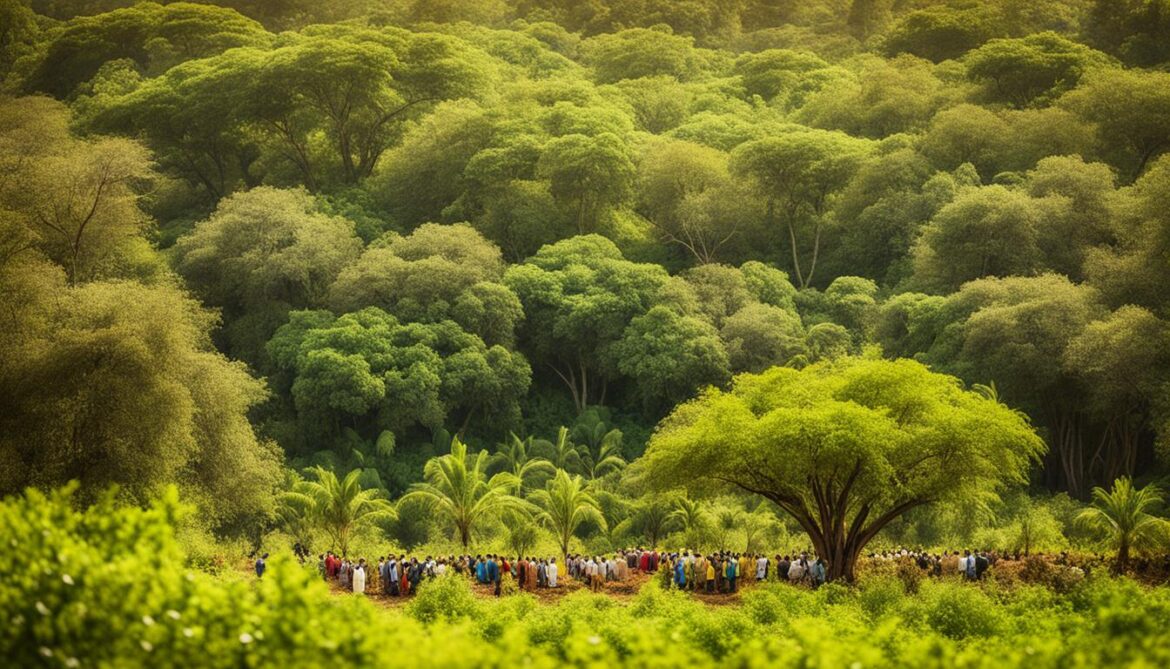
Senegal’s proactive measures to enhance the implementation of the Convention on Biological Diversity demonstrate the country’s commitment to environmental protection and biodiversity research. Through targeted education, effective protected area management, and the valuation of ecosystem services, Senegal continues to play a pivotal role in conserving its exceptional biodiversity for present and future generations.
Support Mechanisms for National Implementation
Senegal, being committed to wildlife conservation and environmental protection, has enacted various laws and policies to support biodiversity conservation efforts within the country. Notable legislation includes the Biosafety Law and the National Policy on Wetlands. These laws are crucial in safeguarding the diverse ecosystems and vulnerable species found in Senegal.
In addition to legislation, Senegal has developed a comprehensive legislative and regulatory framework that ensures the fair and equitable sharing of benefits arising from biodiversity. This framework helps in sustaining the delicate balance between conservation and development.
To enhance the implementation of biodiversity conservation measures, Senegal has put in place various mechanisms. These mechanisms include:
- Funding: Senegal has allocated financial resources to support biodiversity conservation initiatives across the country. These funds are utilized for activities such as habitat preservation, species protection, and research.
- Capacity-building: Organizations and individuals involved in wildlife conservation and environmental protection receive training and support from the government. This promotes knowledge and skills development, ensuring effective implementation of conservation measures.
- Coordination: Senegal emphasizes the importance of collaboration and coordination among various stakeholders involved in biodiversity conservation. This ensures synergy and avoids duplication of efforts.
- Mainstreaming: Biodiversity conservation is integrated into various sectors and policies, including agriculture, tourism, and urban planning. This approach ensures that conservation is not seen as a separate entity but is harmoniously integrated into all sectors of the economy.
Social responsibility plays a significant role in biodiversity conservation. Senegal encourages corporate entities and communities to actively participate in conservation efforts, contributing to the long-term sustainability of the country’s rich biodiversity.
Support Mechanisms for National Implementation
| Mechanism | Description |
|---|---|
| Funding | Allocation of financial resources to support biodiversity conservation initiatives |
| Capacity-building | Training and support for organizations and individuals involved in conservation |
| Coordination | Promoting collaboration and coordination among stakeholders |
| Mainstreaming | Integration of biodiversity conservation into various sectors and policies |
“The protection and conservation of Senegal’s wildlife and environment is a collective responsibility. We need the active participation of individuals, communities, and businesses to ensure the long-term preservation of our unique biodiversity.”
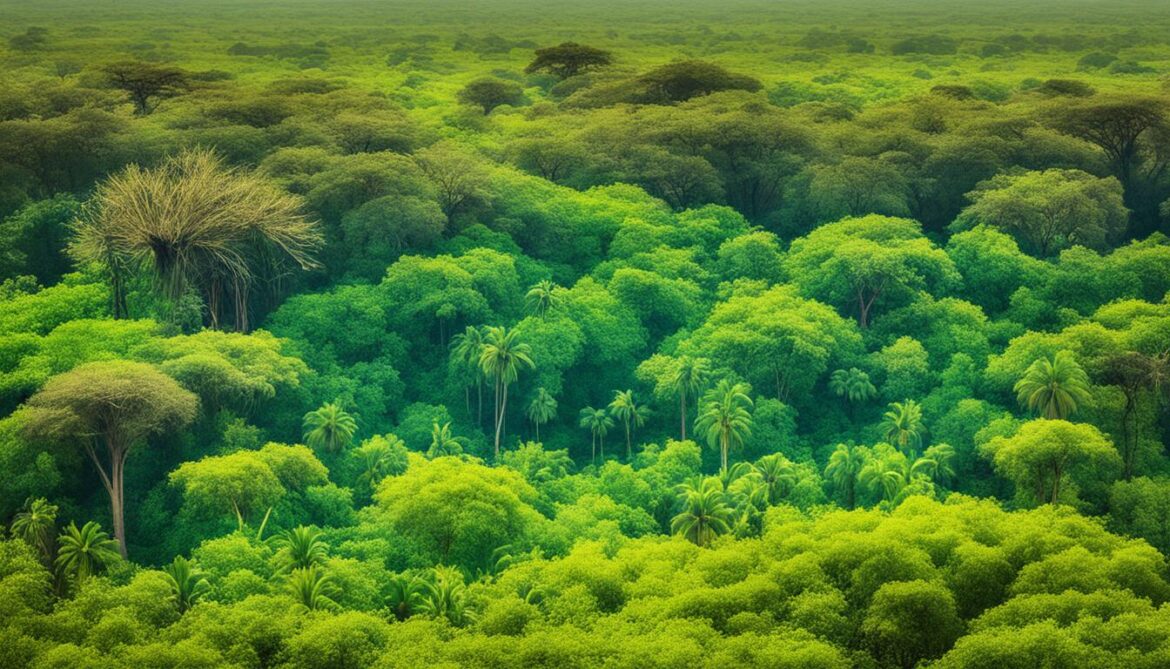
Case Studies
Specific case studies in Senegal highlight the importance of addressing the threats and challenges to biodiversity. These studies shed light on the impact of human activities on endangered species and the delicate balance of ecosystems in biodiversity hotspots.
The Invasion of Salvinia Molesta: Threats to the Senegal River Delta
The Senegal River delta, a renowned biodiversity hotspot, has faced significant challenges due to the invasion of Salvinia molesta, a highly invasive aquatic fern. This invasive species has rapidly spread in the delta area, threatening the fragile ecosystem and endangering various plant and animal species.
The dense growth of Salvinia molesta forms thick mats on the water surface, preventing sunlight from reaching submerged plants and depleting oxygen levels. This disrupts the balance of the aquatic ecosystem, leading to negative impacts on fish populations and other aquatic organisms. The invasion also hampers navigation, irrigation, and water supply for local communities.
Efforts are underway to address this threat through collaborative initiatives involving local communities, governmental organizations, and international partners. These initiatives focus on implementing effective control measures, such as mechanical removal and the use of herbicides specifically targeted to combat Salvinia molesta.
“The invasion of Salvinia molesta in the Senegal River delta is a clear example of the urgent need for cooperation and coordinated efforts to protect our biodiversity. By joining forces, we can successfully combat invasive species and safeguard the delicate balance of ecosystems in biodiversity hotspots like the Senegal River delta.”
The case of Salvinia molesta invasion highlights the critical role of international collaboration and knowledge-sharing to tackle common challenges in biodiversity conservation.
In one case study:
Conservation Efforts in the Niokolo-Koba National Park
Niokolo-Koba National Park, located in southeastern Senegal, is a vital refuge for endangered species and a UNESCO World Heritage site. It is home to the critically endangered West African lion, the African elephant, and the Derby eland, among other rare and threatened species.
Conservation organizations and local communities have joined forces to protect this important biodiversity hotspot. Efforts have been focused on anti-poaching measures, habitat restoration, and community-based conservation initiatives.
These collaborative efforts have shown positive results, with an increase in the populations of some endangered species and improved ecosystem resilience within the park. Ongoing research and monitoring efforts ensure the effectiveness of conservation strategies, guiding future decision-making processes for the protection of Niokolo-Koba National Park’s unique biodiversity.
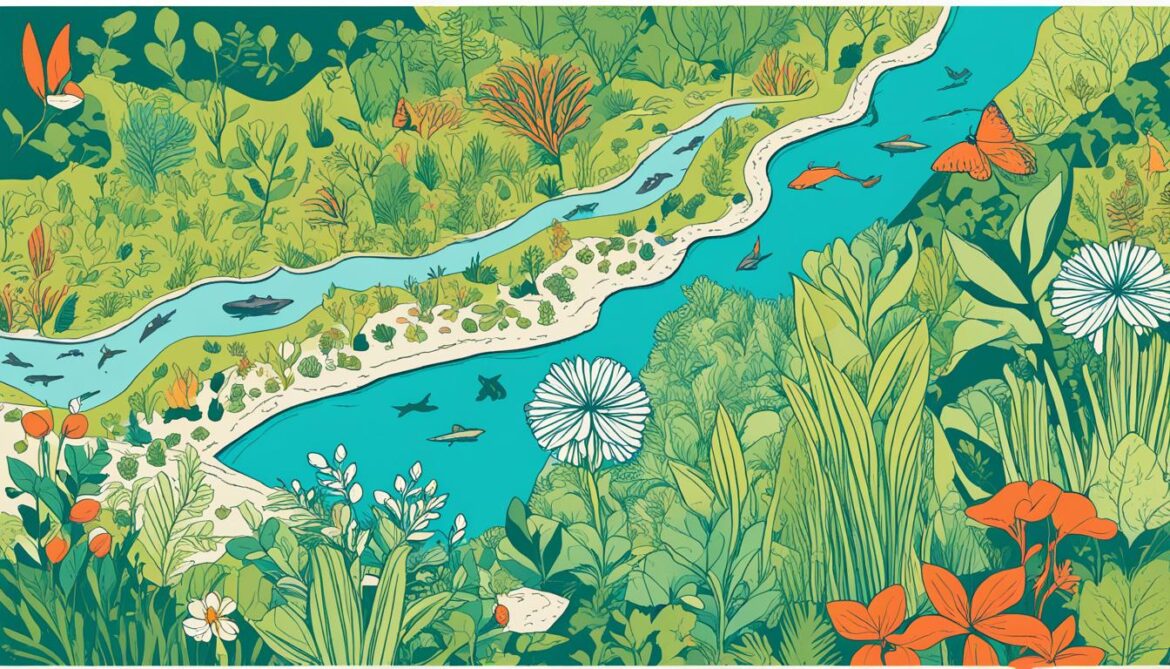
The case study of Niokolo-Koba National Park exemplifies the significance of targeted conservation actions and community involvement in safeguarding endangered species and preserving biodiversity hotspots.
Through these case studies, it becomes evident that the conservation of endangered species and the protection of biodiversity hotspots in Senegal require comprehensive strategies, collaborative efforts, and a commitment to balancing human needs and ecological sustainability.
Conclusion
Senegal has made significant strides in biodiversity conservation through the implementation of its National Biodiversity Strategy and Action Plan (NBSAP) and the establishment of protected areas. These initiatives have been instrumental in safeguarding the country’s unique species diversity and natural habitats.
However, challenges still persist in integrating biodiversity into national planning, mobilizing adequate financial resources, and ensuring the safeguarding of endangered species. These challenges necessitate continued efforts and collaborations between government agencies, local communities, and international partners to overcome.
Nevertheless, Senegal’s commitment to biodiversity research and conservation remains strong. The country’s ongoing research initiatives not only enhance our understanding of its diverse ecosystems but also pave the way for evidence-based conservation strategies.
Preserving Senegal’s rich biodiversity is paramount not just for the country itself but also for the global community. By valuing and protecting its natural heritage, Senegal is contributing to the long-term sustainability of our planet and providing a brighter future for generations to come.




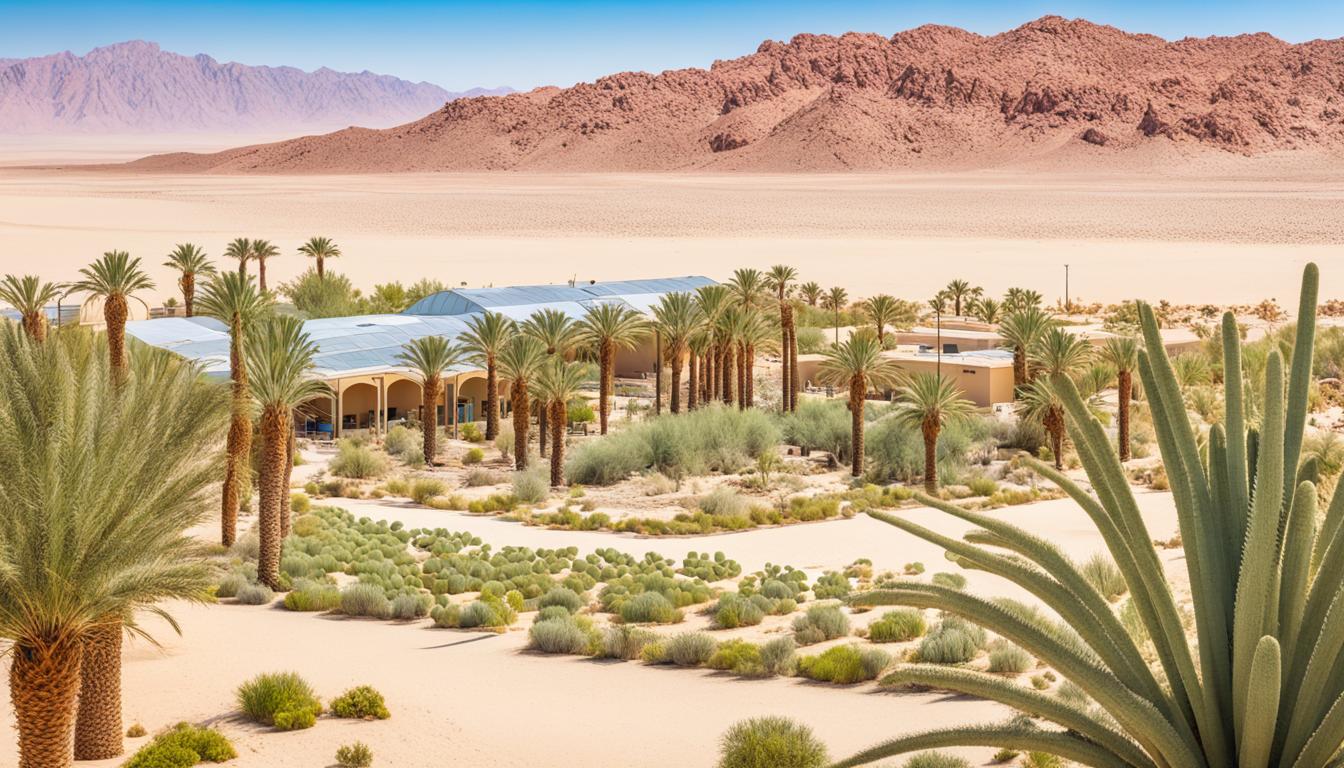




First Sighting Of A 'Ghost Elephant' In Years: Is It A Lone Survivor? - Animalko
5 months ago[…] © Constructive Voices […]